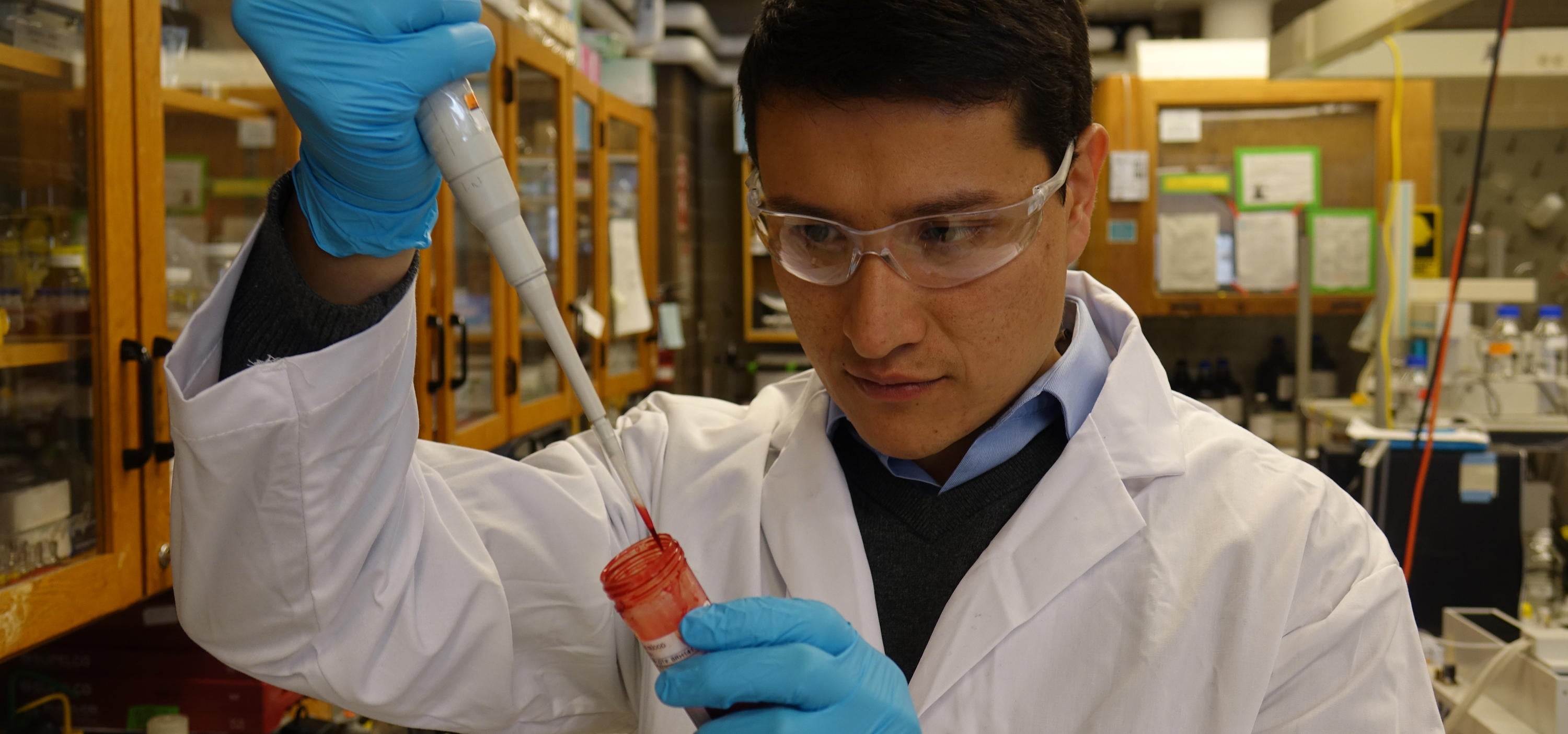
The Pawliszyn Research Lab is leading efforts to catch illicit drug use, creating a revolution in rapid on-site analytical technologies.
Recent scandals like the 2014 Winter Games are undermining efforts to create a culture of clean sport. Broken chains of custody, tampered sample vials, secret doors for switching tainted samples, athletes timing dosages to stay below the detection limit. It’s these issues, Waterloo chemists say, that can be avoided with rapid, on-site testing that would screen athletes while deterring them from cheating in the first place.
Gómez-Ríos and his colleagues in the Department of Chemistry are working on a rapid on-site screening technology called coated blade-spray mass spectrometry that can detect more than 100 drugs using just one drop of blood or a few microlitres of urine on a coated sample strip at the parts per billion level. That’s like detecting a sugar cube dissolved in an Olympic sized swimming pool.
"If you know you’re being continuously watched, you’re less likely to cheat in the first place,” says Dr. Germán Augusto Gómez-Ríos, a chemistry postdoctoral fellow with the Pawliszyn Research Group, who cites the psychological advantage of having the chemical analysis take place in front of the athlete on a regular basis."
So far, the team has reduced a standard analysis of 30 minutes down to 55 seconds for semi-automated protocol and less than 15 seconds for a fully automated protocol. Gómez-Ríos wants to reduce the fully automated protocol down even further to 10 seconds per sample.
“That’s fast enough to screen every Olympic athlete every day,” he says.
As a screening technique, coated blade spray-MS is ideal. It reduces sample preparation to a single step and, in the near future, it will be interfaced to a simplified mass spectrometer that has been shrunk to the size of a PC desktop and can be setup anywhere.
 A
sample
probe
being
prepared
for
coated-blade
spray-MS
analysis.
A
sample
probe
being
prepared
for
coated-blade
spray-MS
analysis.
Currently, the World Anti-Doping Agency (WADA) runs full analyses on athletes multiple times between pre-competition and post-competition. The samples are split into two vials: one vial for immediate analysis and another for retesting at a later date. Both samples are then sent away to one of 35 approved-WADA labs worldwide. All this takes time and leads to openings where cheaters can take advantage of the system.
Under a screening regime, those athletes that test positive in any way from slight misstep to full on cheating, would then be followed up with a full analysis by standard methods.
“The important thing here is avoid false negatives,” says Gómez-Ríos. “One of those would be a disaster.”
When it comes to large-scale drug screening, cost is also a factor. The group is working with industry to reduce the cost from an average of between $20 to $100 to just a few dollars per sample.
“The idea is not to do a full analysis with every sample, only the positive ones,” says Dr. Nathaly Reyes-Garces, a postdoctoral fellow who helped develop the protocol. “Coated Blade Spray has demonstrated to provide reliable results for different compounds in the concentration range required by WADA. A sample that shows a positive result can then be subjected to full confirmatory analysis.”
Canada Research Chair Janusz Pawliszyn and his lab have developed a number of methods in addition to coated-blade spray for rapid drug testing in the field. The methods are based on a technology he developed in the 1990s called solid-phase microextraction (SPME), which use a solid coating on a sample probe to selectively extract chemical substances from blood, saliva, urine and even plasma. After a simple washing step, the probe can then be placed in front of the mass spectrometer for analysis.
Coupled with recent advances in analytical instrumentation, which also include Direct Analysis in Real Time (DART) and Open-Port Probe (OPP) mass spectrometry, SPME sampling methods are positioned to revolutionize drug testing everywhere from sports competitions and roadside checkpoints and workplaces, to emergency triage, therapeutic drug monitoring and bed-side diagnostics in hospitals and doctor offices.
Details about coated-blade spray MS were published last month in the journal Bioanalysis.